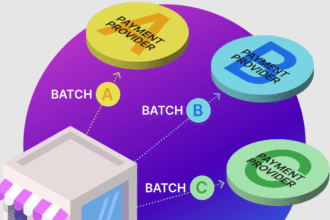The manufacturing industry is always looking for innovative ways to improve business procedures and reduce costs. Recent 3D technology, equipment, and materials advancements have changed manufacturing. As a result, the industry is slowly relying on 3D printing to increase supply chain mobility, flexibility, and adaptability.
As the world grows more demanding, traditional manufacturing finds it hard to keep up with requests. There are numerous advantages of using 3D technology, which have changed the face of manufacturing.
Cost Reduction
Traditional manufacturing requires a skilled number of workers and machinery to create products. The entire team must operate devices and then piece together the final product. This whole process is expensive and takes an enormous amount of time.
3D printing only requires one person to turn on the 3D printer, and the device will start an automated process to create the uploaded design. Switching to 3D printing means reducing the labor costs as no more skilled workers are needed.
Risk Reduction
There are always risks of errors when manufacturing new products. This new technology helps businesses confirm designs fasters before streamlining them to production. In addition, a 3D printer boosts confidence because a 3D model is easier to redo and modify, unlike the traditional method.
The setup costs are significantly reduced because manufacturers don’t need to produce many product parts. The traditional method of manufacture relies on multiple workers mass producing a line of products. The 3D process only requires the material, somebody to turn it on, and nothing else to manage an order. Using 3D technology means fewer workers, and fewer machines reducing the risk of errors to the minimum.
Cheaper Failure
Machines can always break down and need replacing, which can set back the production line for days. There is also the problem with human errors; production needs to start from zero. It impacts the cost significantly, whereas 3D printing leaves less room for error because everything is automated. Products get created in approximately one day with the help of selective laser sintering. Companies can create a new product without losing many production days if something needs to be adjusted. Readjusting a model can take a couple of hours and then it’s back on the production line.
Market Time
People can design and print 3D concepts on the same day. This new technology makes it possible to put ideas into real life faster than traditional manufacturing. It translates into a better business in terms of large-scale production. This innovative technology can reduce the manufacturing time from months to days.
It is a unique advantage for businesses because they can always stay ahead of the competition. Not only is there no need to rush launching products, but with 3D printing, they have time to modify the model and reprint it and still be faster than traditional manufacturing. The new technology leaves more room for growth so businesses can focus on marketing plans that boost sales.
Build and Grow
Adopting 3D manufacturing means that businesses implement their unique ideas into real-life products. There is plenty of room to build new products and grow the business. 3D manufacturers can virtually create anything and then put it into printing. They will see the final product in no time. In business terms, any idea can go to the finish line faster and cheaper.
No Geometrical Limitations
Traditionally, simple manufacturing had limitations regarding how a product could be constructed and assembled. Although it has come a long way, there are still impediments. On the other hand, 3D printing doesn’t have limits, which means endless possibilities.
Before, it would have been hard or almost impossible to achieve certain angles and geometries, things like holes that change direction, or square interior cavities. Nowadays, they can easily get constructed with the help of 3D manufacturing.
Less Waste
Traditional manufacturing produces a lot of waste, which is an environmental issue. For example, the injection process requires molds and additional material to top up the molds. In contrast, 3D manufacturing uses resources more efficiently, meaning less waste. The 3D printer only uses the material inserted in the extruder. Therefore, it will be the only material to assemble the products.
Less Storage Space
Traditional manufacturing requires plenty of storage units to store the machinery and the products. Depending on the size of the storage unit, the price can increase considerably. Businesses that use 3D printing cut the cost of storage space because goods get made as they get sold. The advantage is that there is never overproduction and unsold items.
Overall, 3D printing improved the manufacturing process for goods. It simplifies the creation and production process while cutting costs for most procedures.














